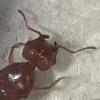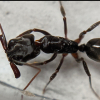Just a few questions for my fellow Floridians. About native or invasives species found in this state. Also as FYI I am in Central FL so it might be different for pan handle or far south.
Is there any species that would be dangerous to keep as pets in our area? Such as, from what I read, some ants can produce too much formic acid that it can cause lung issues in humans and other animals. Is there species I should avoid because of some reasons like that or others? I plan on keeping one colony of several species so I'm always on the look out for fresh queens I've never seen before. I'm not too worried about ants like Solenopsis invicta, lived with them all my life even if it wasn't in the house, I mostly know what to expect and no one in my family is allergic to them. I'm more concerned with issues that might not be immediately obvious or something that can kill you with a single sting (which I doubt around here but I guess it's possible).
Mold, Florida is a mold fest and from what I've seen inevitable when keeping ants. What types of mold do I have to keep an eye out for that is actually dangerous to them or humans/pets?
Summer vs Winter: Florida doesn't normally get too cold, we rarely get to freezing and when we do it's very short. Do you hibernate any of your Florida species? When FL temperatures drops do you let them naturally adjust to the changes or do you add extra heat for them?
What was the hardest species to keep that you've owned within your time of Ant Keeping in Florida? And what was the trouble with them? Refusing to lay during founding? Picky about what foods they liked? Escaped ALL the time?
What is your favorite species that you have kept so far? And why?
A weird question I suppose but... candles? Are they dangerous to pet ants? I love burning candles but I do it less when it's hot out so I haven't burned any since I started Ant Keeping. Are burning candles at all dangerous to my pet ants?


















